I am a savoury breakfast kind of girl. I love my avocados, omelettes and cold cuts. Still, when I want something truly special, I always think of a sweet table spread. For me, love always starts at the kitchen and what better way to say “I appreciate you” than to wake up, put your apron on, and start preparing a sweet thing to share. This recipe is basically it. No matter if partner, mother, best friend, son or neighbour. You will want to spread the love with this one.
I came up with this recipe looking for breakfast ideas with seasonal fruits. Now I also realise the recipe speaks of a journey. The story starts in France, with the crepes. A very thick layer of batter spread on a pan that you have to be somewhat skilled not to break when turning it. I have some practise, if I may say. My training years of crepe making where not in France, but in Catalonia, where some of the French cuisine has been adopted. My parents have an ice cream store and I spent many hot summers working there. Serving happiness and love, as we like to say. The top selling items were of course the home-made ice creams, the horchata beverage and also the crepes. I would make maybe 50 a day. One after the other. Batter pouring, batter spreading, crepe turning and crepe filling.
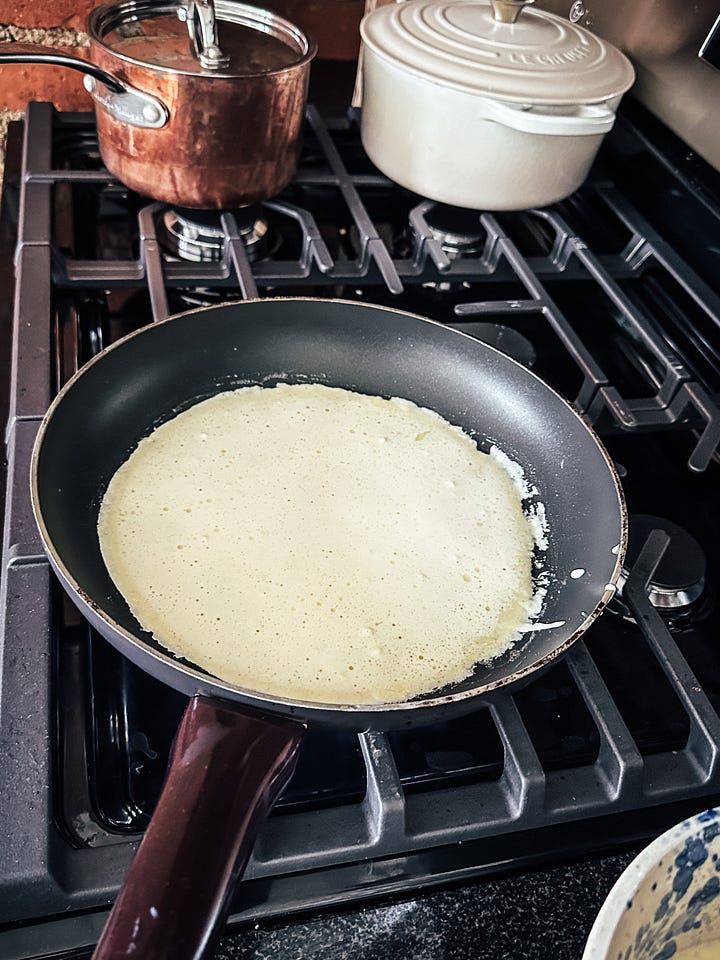
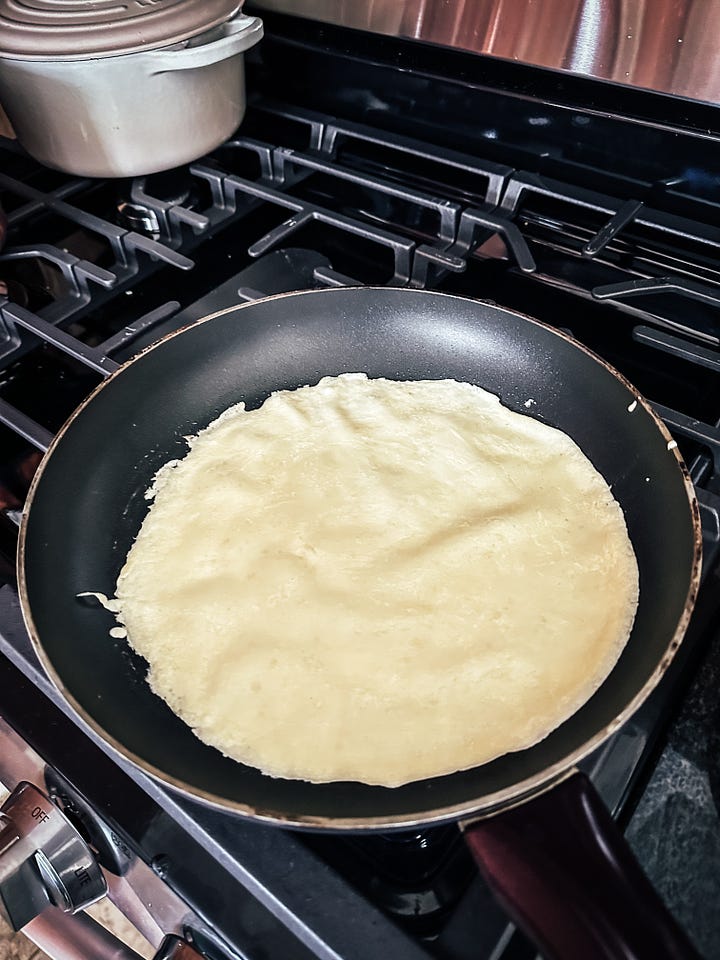

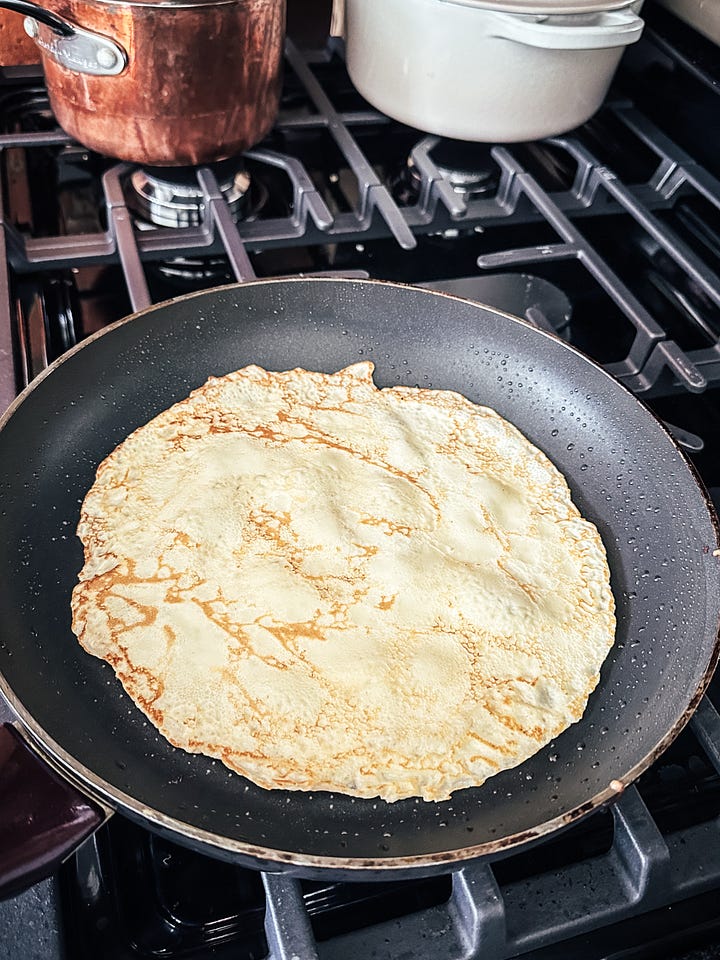
After finishing my Master’s Degree I moved to the Italian region of the Lombardy for some months. There, the journey continues with the mascarpone cream. The mascarpone is one of the most beloved cheeses of the region and it’s a basic ingredient to make the tiramisu, one of the first recipes I learned and that is now a classic within my family. I was working as an au pair, and Daniela, the mother of the family, loved to cook and taught me many things. I have precious memories of us making pastas, sauces, casseroles and desserts, many of which had the mascarpone as a base ingredient.
My journey, and now I realise also the one this recipe is following, continues in East Asia. I moved there on 2016 and lived in the region for more than 4 years. The mascarpone cream of the recipe is spiced with some green cardamom and energised with the zest of different citruses. All ingredients of East Asian origins.
Citruses (now in season) are not only what inspired the recipe but also some of the ingredients with the most fascinated history that I have ever encountered. Except a couple of weirdos, all citruses in the world are hybrids of three originals: the mandarin (Citrus reticulata), the pomelo (Citrus grandis) and the citron (Citrus medica). It is thought that these three species appeared about five or six million years ago in the tropical and sub-tropical areas of South East Asia from one common ancestor.
The citron is probably native from Northern India and it’s believed to be the first citrus fruit to arrive to Europe through the Middle East. Greeks and Romans already knew of its existence and its depiction has been found on the walls of Pompeii. The mandarin is thought to be from the South of China and it was already been cultivated 4000 years ago, though it only reached Europe until the XIXth century. The pomelo requires more tropical conditions so probably its origins are more Southern. It spread through the region and arrived to Europe on the XIIth century, though it would have to wait some centuries to make its big hit with the incorporation of the fruit in Jamaica and Barbados by the English.
All the other citrus fruits are hybrids of the previous ones. If you mix certain pomelos and certain mandarins you get the sour orange (Citrus aurantium), probably originated in India. If you cross a sour orange and a citron you get a lemon (Citrus limon). Yes, the most “Mediterranean” fruit is actually South-East Asian. From there, it was introduced to Persia and the Middle East, were it was well established by the XIIth century. Around 1150, Arabs took the lemon to Spain and North Africa. It travelled to the American continent with the second voyage of Columbus, in 1493. And there became, for example, the Meyer lemon, with some tweaks.
The sweet orange (Citrus sinensis) was originated time after the sour orange, and it’s a hybrid of the pomelo and the mandarin. All these citruses, and many more like the lime, the kumquat, the kafir lime or the bergamot, originated in Asia, as the base fruits are all Asian native. All citruses but one.
Here is where the journey we have taken finishes, at least for now. We arrive to the American continent. Both with the recipe and with my life story. From Bangkok, I moved back to Europe for a couple of years, and then I set foot in America. As if following the steps of the citruses. In this part of the world is where the last of the citruses was created, the most recent one and the one that finishes off this recipe.
The grapefruit was originated in Barbados, probably in the mid-1600, as the result of the mix of a pomelo and a sweet orange. It is believed that a certain captain named Philip Chaddock may have introduced the pomelo in the islands, where it is known as “shaddock”, and that also gave the name to the new fruit until someone called it “grapefruit” in the 1830s. It may have been because the fruit grows in bunches, like grapes, or because it tasted like a bitter grape-looking native fruit, anyhow, the name stuck.
This American fruit with Asian parents is fresh and bitter, as are all the children of the pomelo, and makes a fantastic syrup. One that wraps up this recipe that is also a journey through continents, climates and flavours. Sweet, sour, bitter, creamy, spiced… All in one morsel. A bite of love.
Some tips
To make these delicious crepes you will actually be making 3 different recipes. You should start with the crepe batter as it needs to rest for about an hour in the fridge (if you are on a rush, you can do a bit less). The consistency you are looking for is quite runny, so add as much milk as you need to get there (only a teaspoon at a time!).
While the batter rests in the fridge, you can proceed to make the syrup. I used a blond grapefruit for that because I had a couple at home already, but with a red grapefruit it works just fine, and you’ll get a deeper color. You need to juice the fruit into a bowl and then strain the liquid so only the juice and maybe a bit of pulp goes inside the saucepan. Then you add the sugar and the vanilla extract and you give it a nice mix. It needs to boil first but then you should turn the heat down to prevent burning and let it simmer until it has thickened quite a bit, about 20-25 minutes.
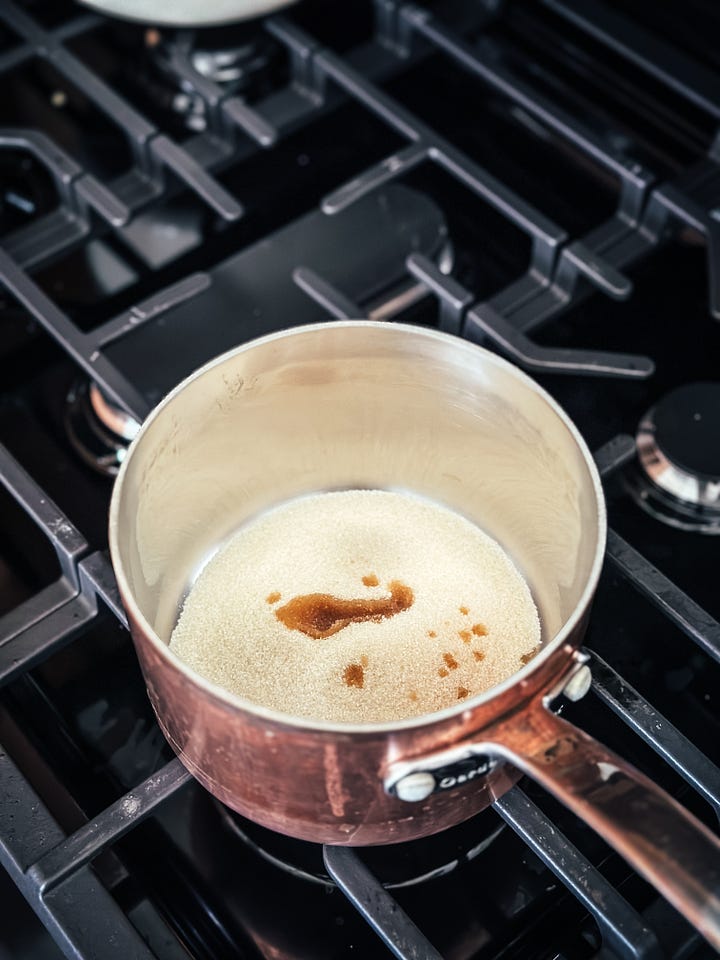
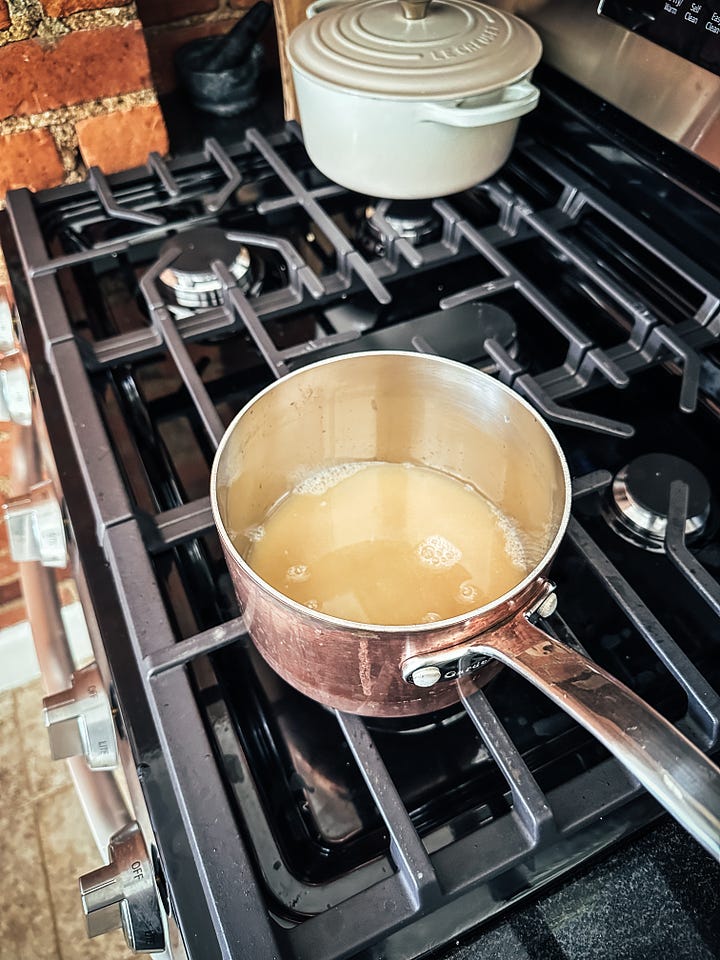
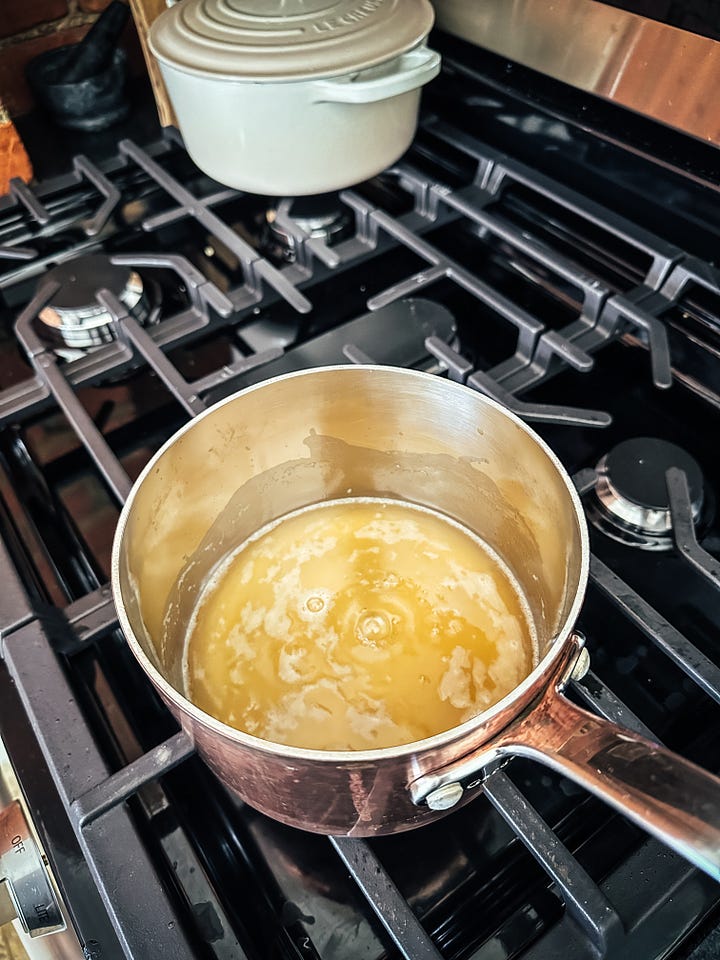
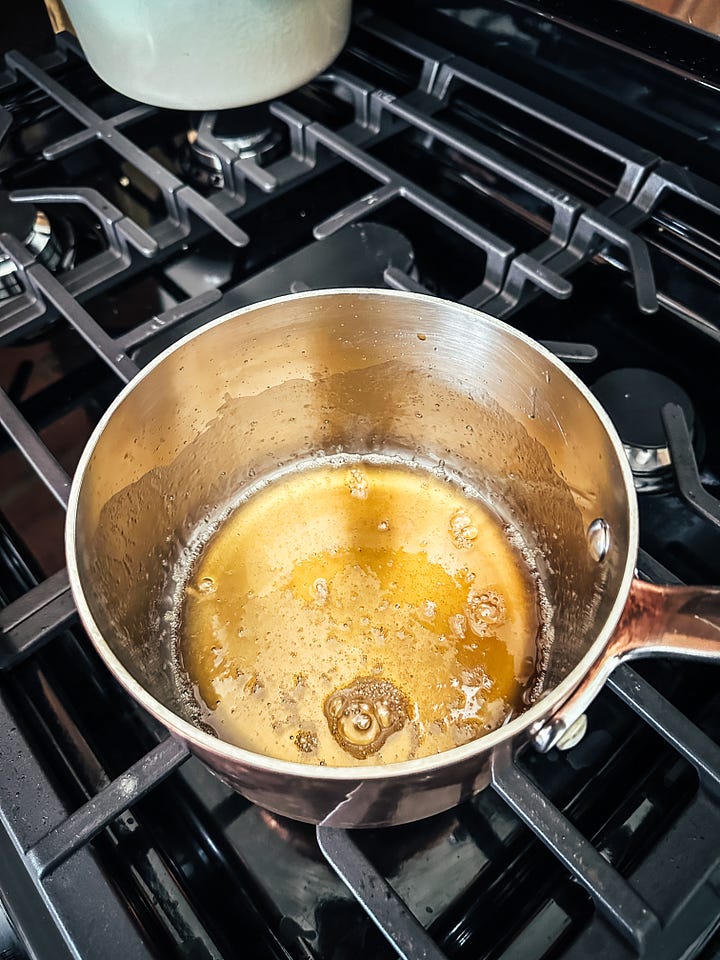
The last recipe here is the mascarpone cream. This cheese is very thick in consistency so to be able to make a cream you’ll need to add some milk. Again, only a little bit at a time. Mix well in between to incorporate and when you have a smooth consistency and your spatula doesn’t struggle to move in the mix anymore you are done. Then you can add the sugar, the ground cardamom and the zest of the different citruses. It’s a really lovely mixture but keep on tasting it and adjusting to your liking. If you like it more spiced, add more cardamom. If you don’t like the taste of lime zest, skip it. You get it, it’s about creating something you are going to love.
A final quick note, is that if you are lactose intolerant, you can substitute the milk for a non dairy alternative or for a lactose-free version. The mascarpone, I highly encourage you to try find a lactose-free version instead of opting for vegan and coconut based or so because the flavour profile may change a lot. When I was living in Budapest, I could easily find lactose-free alternatives that were still made with cow milk so the flavour was very similar. For some reason here in the States is almost impossible! I even struggle finding a good yogurt… But trust me, taking a couple of lactase pills is worth with this one!
Ingredients
2/3 cup plain flour
1 tsp caster sugar
1 1/3 cups milk, plus extra to thin batter and mascarpone
1 egg
1 tbsp unsalted butter, melted, plus extra for greasing pan
1 pinch of salt
1 pot mascarpone (8 ounces)
1 tbsp + 1 tsp icing sugar
12 green cardamom pods, ground
1 Blond or Ruby Red grapefruit, juiced
1 tsp zest of an orange, or to taste
1 tsp zest of a lime, or to taste
1 tsp zest of a lemon, or to taste
1 tsp zest of a grapefruit, or to taste
1/2 cup brown sugar
1 tsp vanilla extract
Instructions
Prep time: 1 hour and 30 minutes
Servings: makes around 6 crepes
Sift the dry ingredients and a pinch of salt into a bowl.
In a separate large mixing bowl, whisk together the milk, egg, and melted butter, then add the dry mixture little by little, whisking until well combined.
Add as much milk as necessary to achieve a pouring consistency.
Cover with plastic wrap and allow the batter to rest in the fridge for up to 1-3 hours.
On the meanwhile, make the syrup.
Juice the grapefruit and run it through a strainer into a sauce pot. Add the vanilla and sugar mix well, cover and bring it to a boil over medium-high heat.
Turn the heat down to medium-low, take off the lid, and simmer for 20-25 minutes. Stir occasionally.
While it cooks, prepare the mascarpone cream.
Add the mascarpone in a medium mixing bowl with the icing sugar and enough milk to achieve a creamy smooth consistency.
Grind the cardamom pods and sift the powder into the bowl.
Zest the citruses adding the zest into the bowl to taste. Mix well to combine. Let rest in the fridge until serving time.
Heat a large non-stick frying pan over medium heat and brush it with butter. Pour enough crepe batter to thinly cover the bottom of the pan, gently tipping the pan to spread the batter evenly.
Cook for 2-3 minutes, then flip the crepe and cook the other side for 1 minute. Transfer to a plate and repeat with the remaining batter.
Spread each crepe with mascarpone, fold them into quarters and pour the syrup on top. Enjoy!
Coming up
If you are curious about how I took these photos, you won’t want to miss next week’s newsletter. I will show the behind the scenes, my creative process and how I decided on the light, the colours, the editing… I’ll welcome you to my home studio!






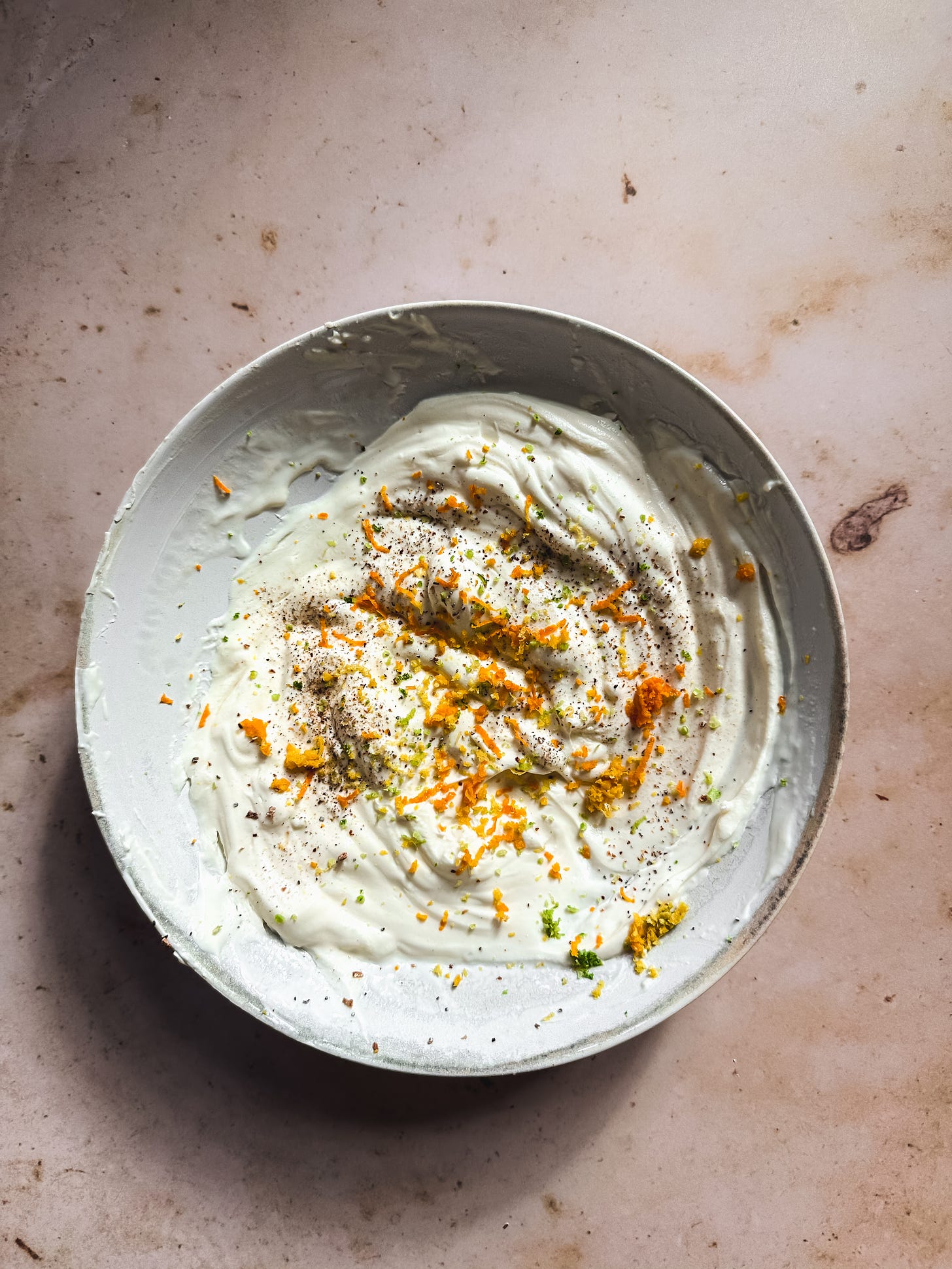
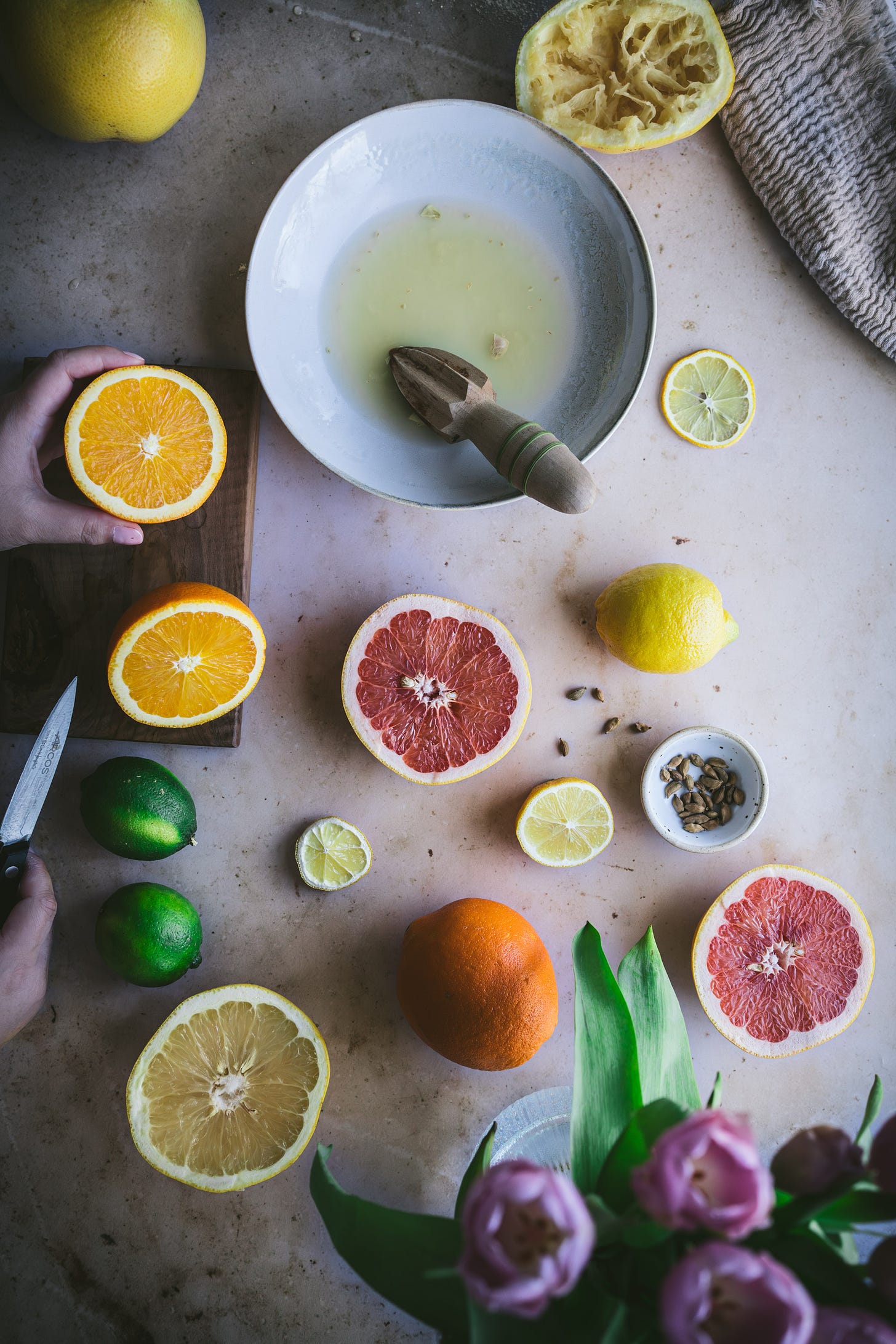
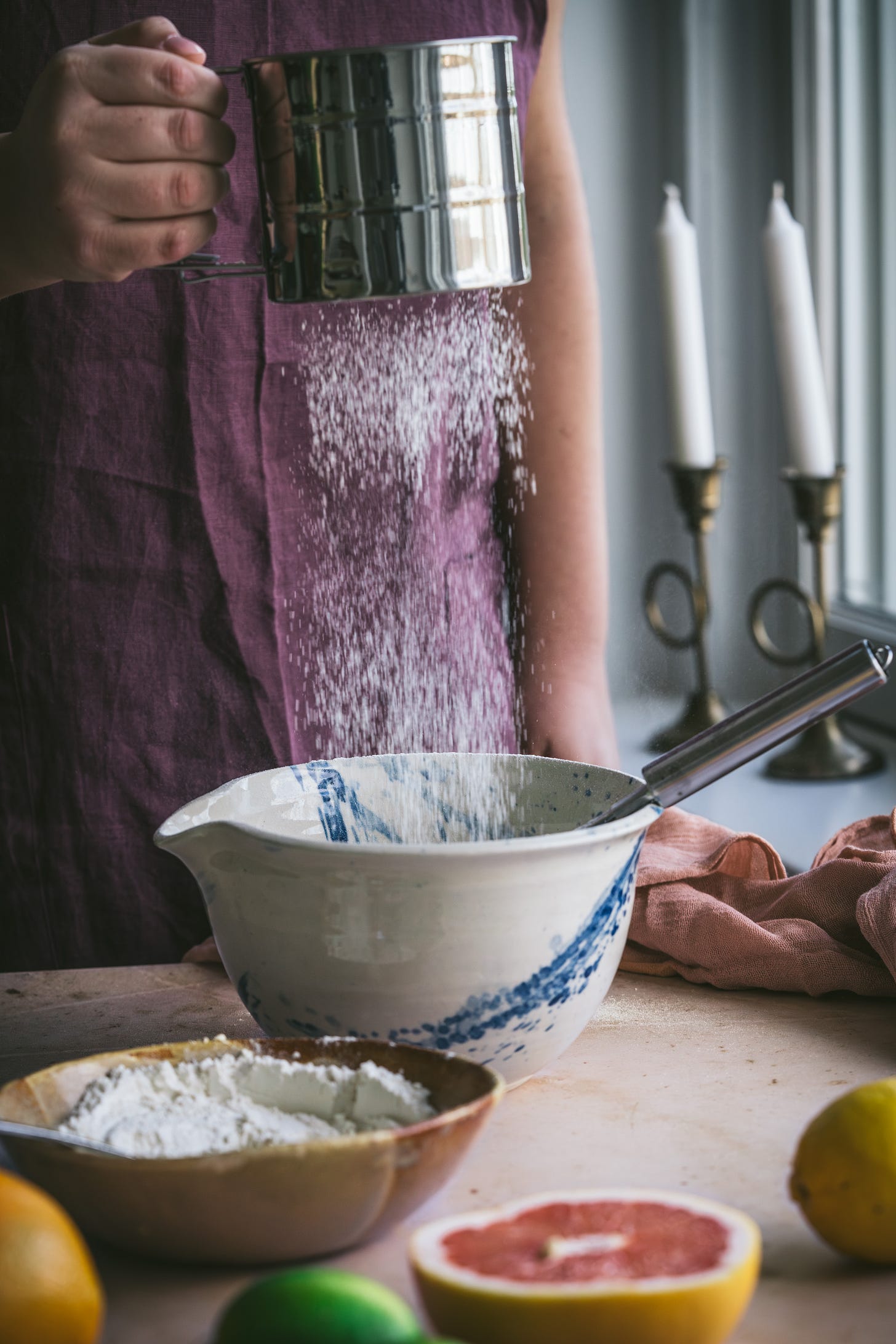
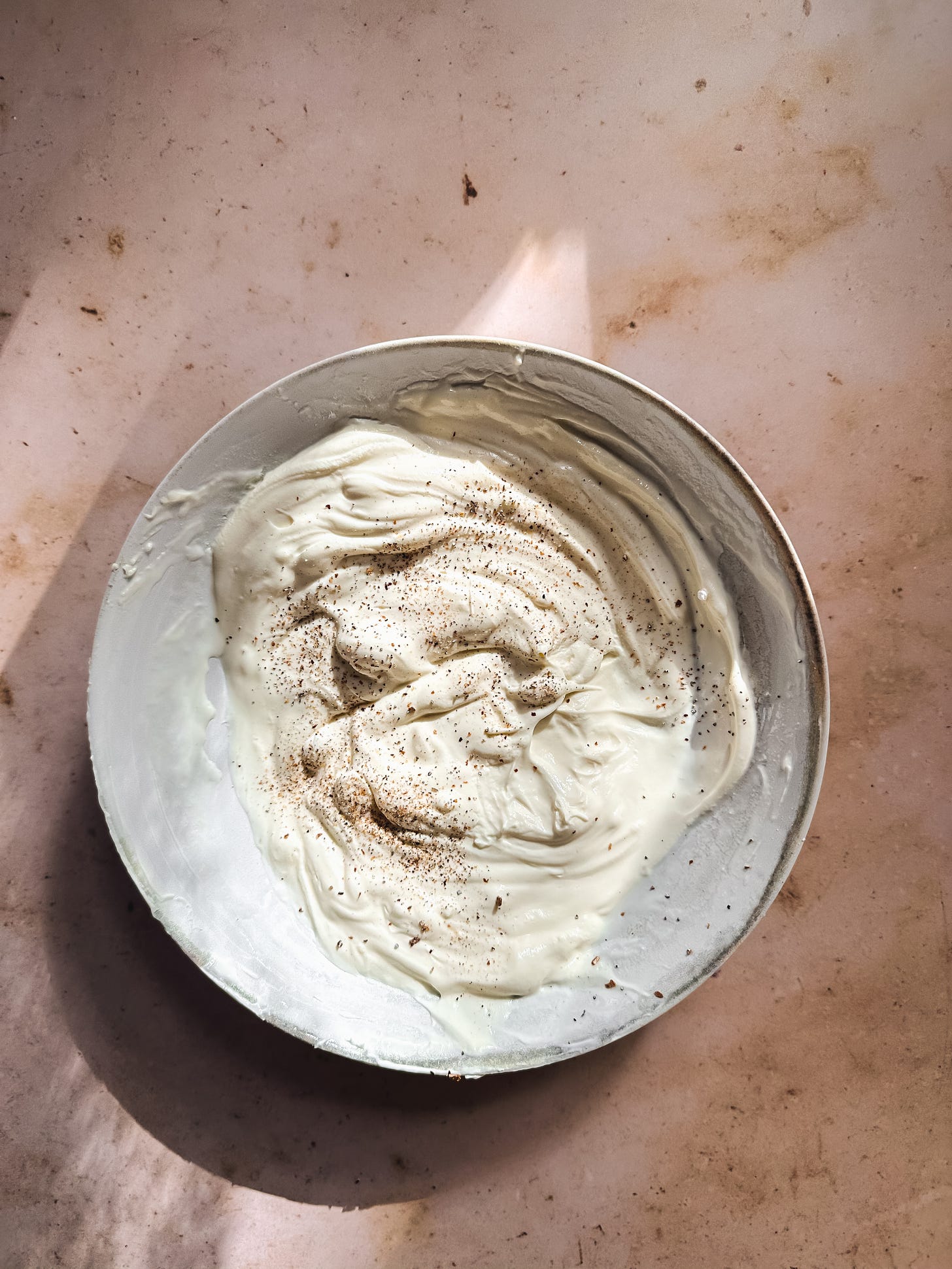
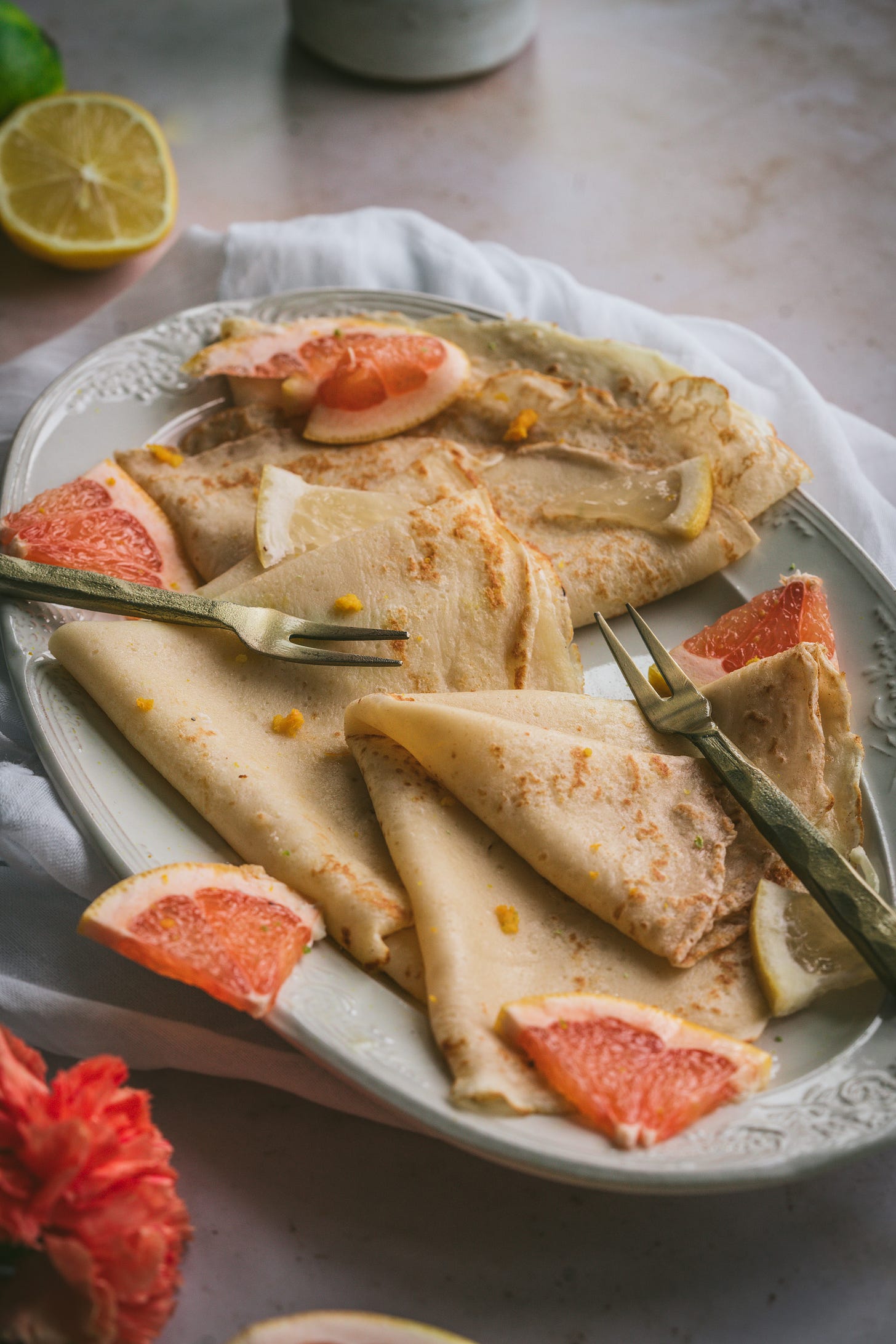
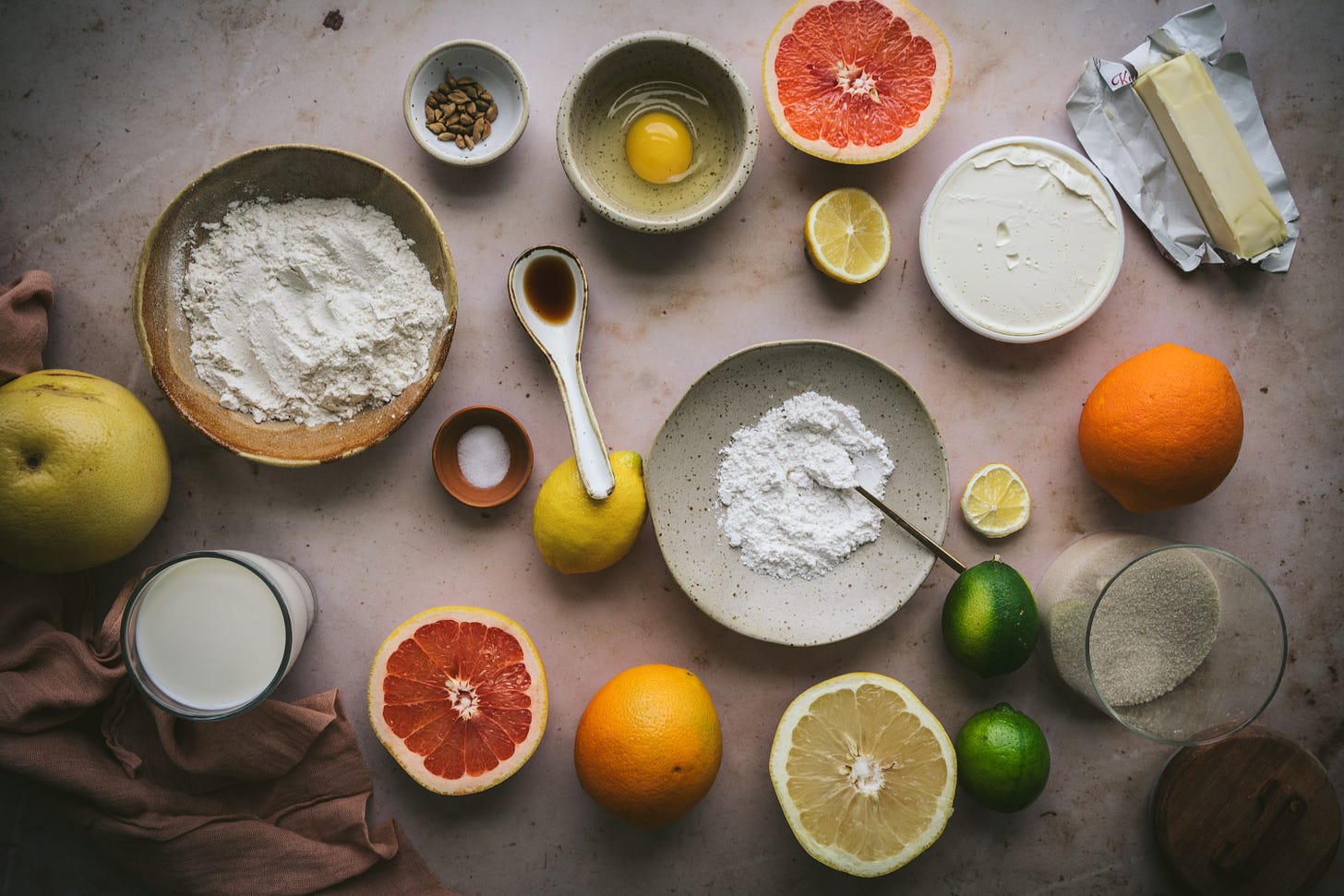

Oh gosh delicious.
And such a beautiful photo too 😍
The photographs are stunning! Definitely not missing the next newsletter 🙌🙌🙌